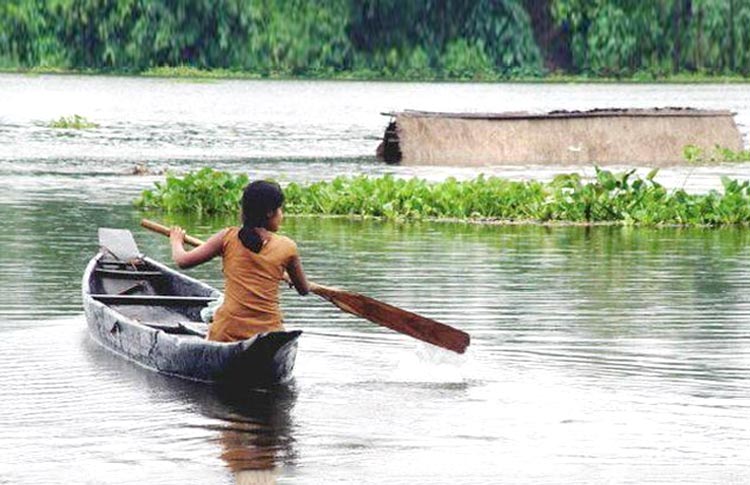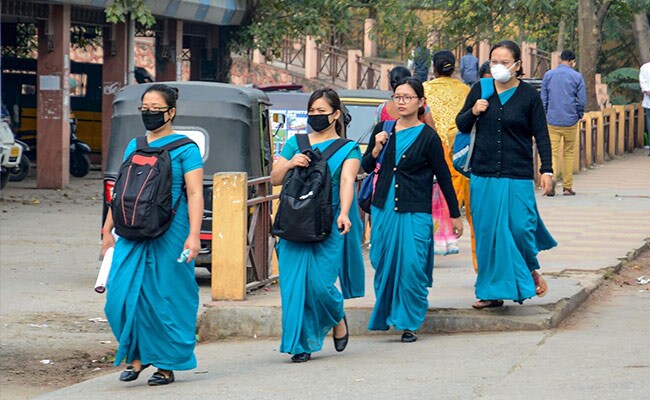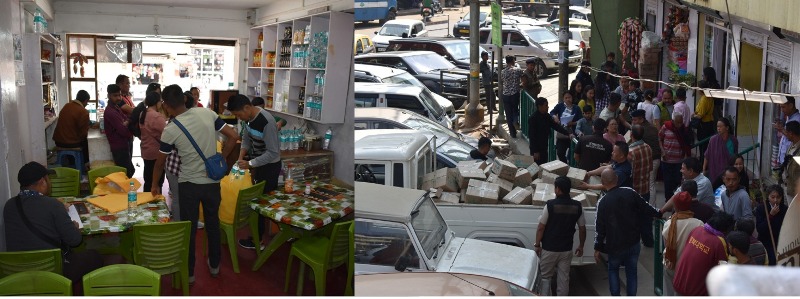By AJ Willingham, CNN
(CNN)The coronavirus has infected more than 100,000 people worldwide. With all of the news of event cancellations, empty flights and health precautions (wash your hands!), it’s natural that people may get a little anxious every time they feel a tickle in their throat or the beginnings of a bad cough.
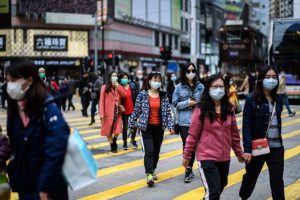 Pedestrians wearing face masks cross a road during a Lunar New Year of the Rat public holiday in Hong Kong on January 27, 2020, as a preventative measure following a coronavirus outbreak which began in the Chinese city of Wuhan.
Pedestrians wearing face masks cross a road during a Lunar New Year of the Rat public holiday in Hong Kong on January 27, 2020, as a preventative measure following a coronavirus outbreak which began in the Chinese city of Wuhan.
(CNN)The coronavirus has infected more than 100,000 people worldwide. With all of the news of event cancellations, empty flights and health precautions (wash your hands!), it’s natural that people may get a little anxious every time they feel a tickle in their throat or the beginnings of a bad cough.
While the coronavirus is certainly something to take seriously, the chances of any individual person getting it are still low. But if you’re wondering whether that stuffy nose could end up being a worst case scenario, CNN talked to Dr. Greg Poland, a professor of medicine and Infectious diseases at the Mayo Clinic and director of the Mayo Clinic’s Vaccine Research Group, about the differences between typical allergy, cold and flu symptoms, and ones associated with the coronavirus.
Itchy eyes? Runny nose? You probably have allergies — or a garden variety cold.
“The issue with seasonal allergies is that they affect the nose and eye,” Poland says. “They tend to be nasal, and most symptoms are localized to the head, unless you also experience a rash.”
Coronavirus and flu symptoms tend to be more systemic.
That is, they affect the whole body.
“The flu and the novel coronavirus, these affect other systems and the lower respiratory tract, Poland says. “You probably won’t have a runny nose, but what you might have is a sore throat, a cough, a fever or shortness of breath. So it’s a subtly different clinical diagnosis.
Pay attention to your temperature: Poland says it’s very unlikely that allergies would result in a fever. They usually don’t cause shortness of breath either, unless you have a preexisting condition like asthma.
Allergy symptoms are regularly occurring, and usually mild.
Poland says if you’ve had the same symptoms around the same time, year after year, you’re probably experiencing seasonal allergies. In that case, over the counter medication and other regular health precautions will help you feel better.
Coronavirus and flu symptoms can put you out of commission.
“If you have an acute case of coronavirus or flu, you will feel so tired, so achy, you’d basically be driven to bed. Everybody would see the difference,” Poland says. “Allergies may make you feel tired, but they’re not going to cause severe muscle or joint ache.”
Cold and mild flu symptoms usually resolve themselves.
With normal illnesses, you’ll start feeling better with rest and proper care within a few days (unless you are elderly or have other health conditions, in which case even mild illnesses may take longer to pass).
Coronavirus and acute flu symptoms could get worse over time.
If you have a nasty case of the flu or coronavirus, you may get worse when you expect to get better. This is a sure sign to seek medical care.
“What would increase the suspicion of coronavirus would be if you were short of breath,” Poland says. “People can also develop pneumonia from the flu, which has a similar presentation, so either way you’re going to want to seek medical attention.”
Early symptoms of allergies, cold, flu and coronavirus could be similar.
Unfortunately, Poland says, the initial stages of colds, flus and the coronavirus can be very similar, and some coronavirus and flu cases can be so mild they don’t raise any red flags. That’s why you have to pay attention to see if your symptoms persist, especially if you are in an at-risk group.
“We’re worried about older people, people with asthma or other lung diseases, people with heart disease or diabetes, and also pregnant women,” Poland says.
Coronavirus cases usually have some context.
So you think you have the coronavirus. Poland says any doctor is bound to ask you some contextual questions, like:
Have you traveled recently, and if so, where?
Have you had anybody in your home or had a workmate or schoolmate who’s traveled? Where did they go?
Have you had anybody in your home from areas where the outbreak is most concentrated?
Have you been on a cruise ship?
Do you live near an area where there’s an outbreak?
“You’re like a detective, trying to accept and put together pieces of data,” Poland says. “If someone who hasn’t left the middle of Kansas thinks they have the coronavirus, I would say take a Tylenol, have plenty of fluids and rest.”
It may sound harsh, but the current availability of testing, treatment and proper response to the virus doesn’t accommodate vague inclinations.
“If you’re worried, call in to your physician,” says Poland. ” Describe your symptoms and they’ll make a decision. You can’t test everybody and you can’t test anybody repeatedly.”
This is also an opportunity to do some critical thinking before you race for a diagnosis.
“You would take that next step if your suspicion increases,” Poland says.
Just because it isn’t the coronavirus, doesn’t mean it isn’t serious.
“In the last few months, 30 million Americans have been infected with a virus,” Poland says. “About 300 to 500 thousand of them so severe they had to be hospitalized, and about 30,000 of them died. It’s the influenza virus. We are so culturally numb to ‘just the flu’ that we don’t take it seriously despite the numbers. And in contrast, the coronavirus has killed about 3,300 in roughly the same time.”
Yes, the coronavirus may have a comparatively higher death rate, but Poland also points out the more people that are infected, the more likely it is the infection will spread to others.
This means even with the statistical difference in death rates, the flu is more prevalent and far more likely to be a problem for the average person.
“When you have 30 million infected, it’s easy to infect that next 10 million,” Poland says.
The bottom line.
While taking precautions to prevent the spread of the coronavirus is important, you may need to live with some uncertainty when it comes to the general health anxieties it inspires.
It’s up to you to stay vigilant, take into account your medical history, monitor any symptoms and think critically about whether your specific situation puts you at risk — or whether you just need a Zyrtec and some rest.
While the coronavirus is certainly something to take seriously, the chances of any individual person getting it are still low. But if you’re wondering whether that stuffy nose could end up being a worst case scenario, CNN talked to Dr. Greg Poland, a professor of medicine and Infectious diseases at the Mayo Clinic and director of the Mayo Clinic’s Vaccine Research Group, about the differences between typical allergy, cold and flu symptoms, and ones associated with the coronavirus.
Itchy eyes? Runny nose? You probably have allergies — or a garden variety cold.
“The issue with seasonal allergies is that they affect the nose and eye,” Poland says. “They tend to be nasal, and most symptoms are localized to the head, unless you also experience a rash.”
Coronavirus and flu symptoms tend to be more systemic.
That is, they affect the whole body.
“The flu and the novel coronavirus, these affect other systems and the lower respiratory tract, Poland says. “You probably won’t have a runny nose, but what you might have is a sore throat, a cough, a fever or shortness of breath. So it’s a subtly different clinical diagnosis.
Pay attention to your temperature: Poland says it’s very unlikely that allergies would result in a fever. They usually don’t cause shortness of breath either, unless you have a preexisting condition like asthma.
Allergy symptoms are regularly occurring, and usually mild.
Poland says if you’ve had the same symptoms around the same time, year after year, you’re probably experiencing seasonal allergies. In that case, over the counter medication and other regular health precautions will help you feel better.
Coronavirus and flu symptoms can put you out of commission.
“If you have an acute case of coronavirus or flu, you will feel so tired, so achy, you’d basically be driven to bed. Everybody would see the difference,” Poland says. “Allergies may make you feel tired, but they’re not going to cause severe muscle or joint ache.”
Cold and mild flu symptoms usually resolve themselves.
With normal illnesses, you’ll start feeling better with rest and proper care within a few days (unless you are elderly or have other health conditions, in which case even mild illnesses may take longer to pass).
Coronavirus and acute flu symptoms could get worse over time.
If you have a nasty case of the flu or coronavirus, you may get worse when you expect to get better. This is a sure sign to seek medical care.
“What would increase the suspicion of coronavirus would be if you were short of breath,” Poland says. “People can also develop pneumonia from the flu, which has a similar presentation, so either way you’re going to want to seek medical attention.”
Early symptoms of allergies, cold, flu and coronavirus could be similar.
Unfortunately, Poland says, the initial stages of colds, flus and the coronavirus can be very similar, and some coronavirus and flu cases can be so mild they don’t raise any red flags. That’s why you have to pay attention to see if your symptoms persist, especially if you are in an at-risk group.
“We’re worried about older people, people with asthma or other lung diseases, people with heart disease or diabetes, and also pregnant women,” Poland says.
Coronavirus cases usually have some context.
So you think you have the coronavirus. Poland says any doctor is bound to ask you some contextual questions, like:
Have you traveled recently, and if so, where?
Have you had anybody in your home or had a workmate or schoolmate who’s traveled? Where did they go?
Have you had anybody in your home from areas where the outbreak is most concentrated?
Have you been on a cruise ship?
Do you live near an area where there’s an outbreak?
“You’re like a detective, trying to accept and put together pieces of data,” Poland says. “If someone who hasn’t left the middle of Kansas thinks they have the coronavirus, I would say take a Tylenol, have plenty of fluids and rest.”
It may sound harsh, but the current availability of testing, treatment and proper response to the virus doesn’t accommodate vague inclinations.
“If you’re worried, call in to your physician,” says Poland. ” Describe your symptoms and they’ll make a decision. You can’t test everybody and you can’t test anybody repeatedly.”
This is also an opportunity to do some critical thinking before you race for a diagnosis.
“You would take that next step if your suspicion increases,” Poland says.
Just because it isn’t the coronavirus, doesn’t mean it isn’t serious.
“In the last few months, 30 million Americans have been infected with a virus,” Poland says. “About 300 to 500 thousand of them so severe they had to be hospitalized, and about 30,000 of them died. It’s the influenza virus. We are so culturally numb to ‘just the flu’ that we don’t take it seriously despite the numbers. And in contrast, the coronavirus has killed about 3,300 in roughly the same time.”
Yes, the coronavirus may have a comparatively higher death rate, but Poland also points out the more people that are infected, the more likely it is the infection will spread to others.
This means even with the statistical difference in death rates, the flu is more prevalent and far more likely to be a problem for the average person.
“When you have 30 million infected, it’s easy to infect that next 10 million,” Poland says.
The bottom line.
While taking precautions to prevent the spread of the coronavirus is important, you may need to live with some uncertainty when it comes to the general health anxieties it inspires.
It’s up to you to stay vigilant, take into account your medical history, monitor any symptoms and think critically about whether your specific situation puts you at risk — or whether you just need a Zyrtec and some rest.

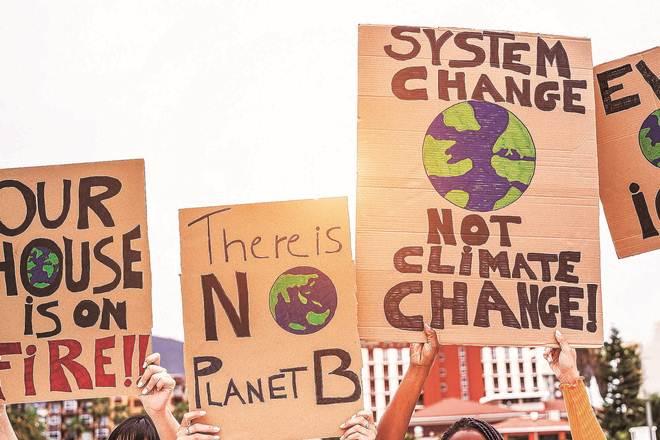



 Pedestrians wearing face masks cross a road during a Lunar New Year of the Rat public holiday in Hong Kong on January 27, 2020, as a preventative measure following a coronavirus outbreak which began in the Chinese city of Wuhan.
Pedestrians wearing face masks cross a road during a Lunar New Year of the Rat public holiday in Hong Kong on January 27, 2020, as a preventative measure following a coronavirus outbreak which began in the Chinese city of Wuhan.

